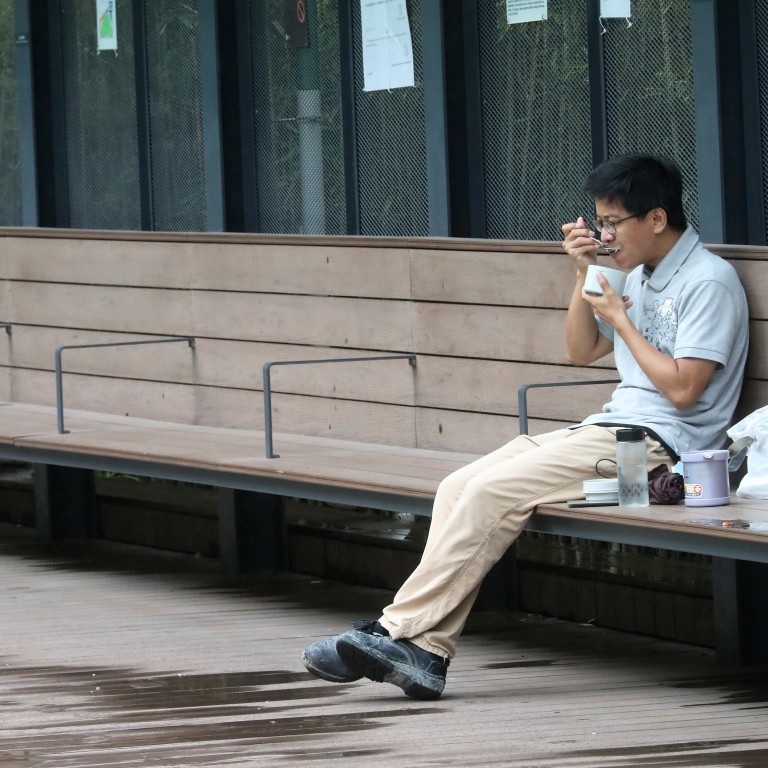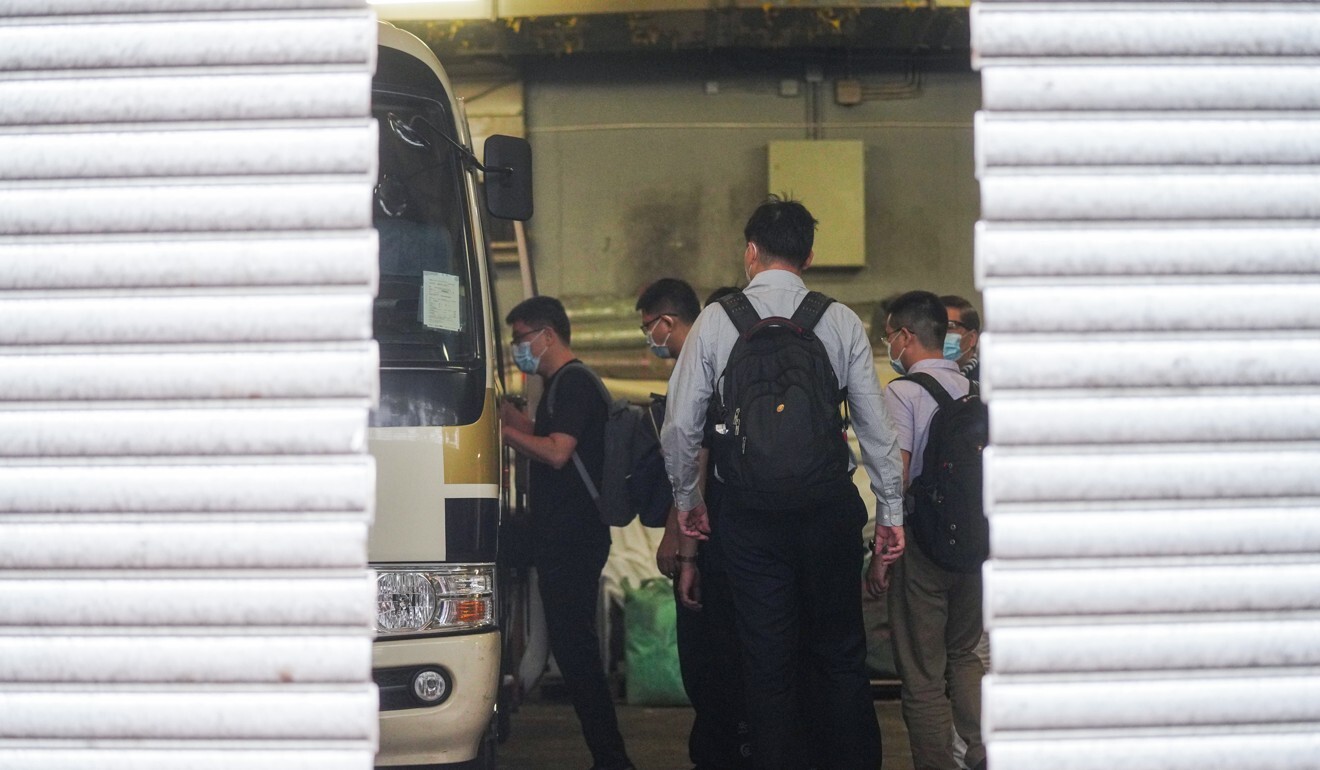
Hong Kong third wave: universal Covid-19 testing tougher than it sounds, say health experts, who urge targeted screenings, continued social distancing
- While mainland help has raised testing capacity significantly, a full multi-day lockdown would be required in order to test all city residents effectively
- ‘If you don’t have a good plan for testing, then a lot of the tests will waste resources,’ pandemic adviser says
Experts argued that continued social distancing, along with testing for higher-risk groups, would be more effective in minimising community transmission of the virus, which has already infected more than 2,400 people, including 35 deaths, since the current outbreak began on July 5.
As of Wednesday, the total tally of infections in the city stood at 3,669, with 42 related deaths.

Debate over whether Hong Kong should test all residents was sparked after mainland respiratory medicine specialist Professor Zhong Nanshan last week called for citywide testing to identify asymptomatic patients, as the city had registered more than a week of triple-digit infections.
But the advice also came at a time when official data showed little sign that the third wave could be reigned in quickly. Data from the Centre for Health Protection show the number of cases that started to develop symptoms peaked on July 27, though some experts’ cautioned those figures might not fully reflect the current situation given the lag time in reporting.
Coronavirus: China positions itself for ‘vaccine diplomacy’ push to fight Covid-19
On Monday, the number of confirmed cases reported slightly dropped to 80, from 113 the day before.
Currently, the administration is adopting a targeted approach in testing, focusing on such higher risk groups as taxi drivers, care home workers, restaurant staff and property management staff, groups encompassing more than 400,000 people.
Daily tests carried out by the public sector also increased from about 2,000 in March to more than 8,800 in July. Three testing firms, including two affiliated with the mainland – Sunrise Diagnostics Centre and China Inspection Company – were pulled in to increase the volume of testing for those high-risk groups.
With the blessing of the central government, a nucleic acid test support team has been formed by the mainland health authorities, with seven members of the team arriving in Hong Kong on Sunday to begin preparations for a temporary laboratory.
Mainland support team leader Yu Dewen said they aimed to raise the city’s daily testing capacity tenfold, to 200,000 or more.
Hong Kong has struggled to ramp up testing capacity using existing public resources. Even with extra machines and space, the public sector has only been able to add 2,400 daily tests this month.
Anthony Wu Ting-yuk, former Hospital Authority chairman and a director of Sunrise Diagnostic Centre, said the firm would be able to process up to 30,000 tests a day by the end of this week. That capacity could be increased by five times – to 150,000 a day – when the pooling method is used, under which five samples are tested in a tube at one time.
Covid-19 time bomb: Hong Kong jobs crisis sparks rise in serious emotional and mental health problems, experts warn
The firm could even raise the daily testing amount within seven days to 100,000 tubes, or 500,000 samples under the pooling method, Wu added.
Mobile “air” labs designed by BGI, the mainland biotech giant behind Sunrise, which have been used as in some mainland cities, could also be sent to Hong Kong if necessary, he said. The makeshift testing facilities are so named because they use inflatable building materials.
Yet, local medical experts said extra testing resources should be used more strategically.
While universal testing was effective this past May in Wuhan, the mainland city where the first Covid-19 cases were identified, experts argued the model cannot be copied in Hong Kong, as it would require a citywide lockdown and collecting of all samples within a few days.
“If you don’t have a good plan for testing, then a lot of the tests will waste resources,” said Professor Keiji Fukuda, a government adviser on the Covid-19 pandemic and director of the University of Hong Kong’s school of public health.
He said while testing could be part of a surveillance strategy that would offer an accurate idea of the size and scope of an outbreak, and provide direction as to how control measures should be adjusted, it would not necessarily need to involve every resident.
“If you have a large population like Hong Kong, you can get the same information by testing smaller numbers of people,” Fukuda said.
Other experts said even with the extra testing resources, supporting measures such as a citywide lockdown would be needed for effective universal testing, something they were not positive could be done easily in Hong Kong.
There was already a lot of backlash and noise when the government banned all dine-in services. I think people may go on riots if lockdown is introduced
“If the testing is done in a prolonged period and people can still go around … those who test positive could infect many other people,” said Chinese University’s Professor David Hui Shu-cheong, another government adviser on the pandemic.
He said the mainland had been able to impose lockdown as its administration was based on individual residential areas and the government was able to provide daily necessities to those trapped at home. But he said that would be much more difficult in Hong Kong.
“There was already a lot of backlash and noise when the government banned all dine-in services. I think people may go on riots if lockdown is introduced,” he said.
He also suggested that even the growth in daily testing capacity enabled by the mainland support team might not generate the quantity needed for universal testing.
Dr Ho Pak-leung from HKU said a complete, citywide test would need to be done in four days, a period shorter than the median virus incubation period of five days, to identify and block further transmission chains. Given Hong Kong’s population of about 7.5 million, that would mean handling nearly 2 million samples each day.
“Could we mobilise manpower to collect 2 million samples each day?” Ho asked.
While it could take up to 14 days for a person infected with Covid-19 to show symptoms, a one-off mass testing that only captures the situation over a short period could mean other cases go missing, said Dr Leung Chi-chiu, chairman of the Medical Association’s advisory committee on communicable diseases.
“You would miss those who are still in their incubation period … some positive cases identified might also be no longer infectious,” he said.
Leung cited the universal screening experience in Wuhan, in which about 10 million people were tested. Only about 300 positive cases were found, and none were infectious.
“The function of that testing was just telling people of Wuhan and all over the country that they could resume normal lives and interaction,” Leung said.
Fukuda said the current combination of measures for patients and their close contacts, such as isolation and treatment, together with population-wide measures like social distancing, mask-wearing and hand-washing, would be able to reduce transmission if done well.
Wu echoed that citywide testing could regain the international confidence in Hong Kong, but said logistics remained an issue.
“The biggest problem we are facing now is sample collection,” said Wu, noting that his company needed to send teams to collect throat swabs for tests.
To facilitate large-scale testing, he said, having residents go for self-swabbing would be a solution when there were not enough sample collectors to go around.
Additional reporting by Victor Ting

